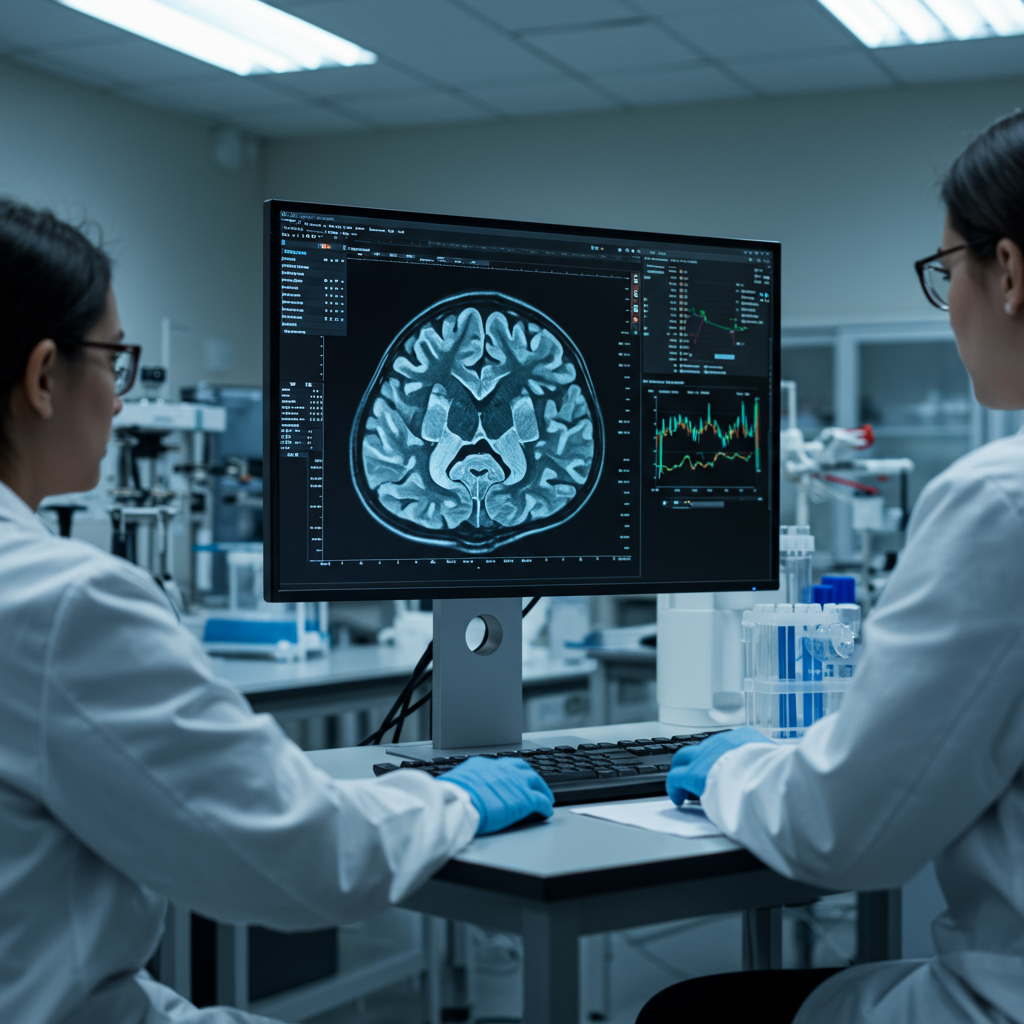Getting older is a natural part of life, but the path our health takes as we age isn’t always predetermined. While chronological age is fixed, our bodies and brains age at different biological speeds. Exciting new research is shedding light on this concept, offering a potentially groundbreaking way to assess aging and predict future health challenges years in advance.
Scientists have developed an innovative tool capable of measuring how fast someone is biologically aging using just a single brain MRI scan. This remarkable technology goes beyond simply telling you your age; it can predict your future risk for chronic conditions, including dementia, often decades before a diagnosis might occur. This early warning could provide a critical window for individuals to make significant lifestyle changes while they are still young and healthy, potentially slowing down or even preventing the onset of severe health problems later in life.
Unlocking the Secrets of Biological Aging
The technology, named DunedinPACNI, is the result of collaboration between researchers at prestigious institutions like Duke, Harvard, and New Zealand’s University of Otago. Their work leverages data from the renowned Dunedin Study, a unique, decades-long health research project that has meticulously tracked over 1,000 New Zealanders since their birth in the early 1970s.
Unlike traditional aging clocks that rely on comparing different age groups at one point in time (cross-sectional data), the Dunedin Study offers invaluable longitudinal data. Participants have undergone extensive health monitoring over nearly 20 years. Researchers tracked a wide range of physiological markers – everything from blood pressure and cholesterol to lung and kidney function and even dental health. By analyzing how these markers changed over time, the team calculated an individual “pace of aging” score for each participant, reflecting the physical wear and tear on their body.
The researchers then took this rich dataset and trained the DunedinPACNI tool. Their goal was to see if a single brain MRI scan, specifically one taken when participants were 45 years old, could predict the biological aging pace previously determined by decades of multi-system health data. The training process was successful, creating a sophisticated algorithm that could estimate a person’s biological age rate based solely on their brain scan.
Validating the Brain Clock
After training the tool on the Dunedin Study cohort, the team put it to the test. They used DunedinPACNI to analyze brain scans from diverse populations across the US, UK, Canada, and Latin America. This external validation was crucial to ensure the tool’s predictions held true beyond the original study group and across different demographics and geographic locations.
The results were compelling and consistent. Across these varied datasets, individuals identified by the tool as having a faster biological aging rate, indicated by higher DunedinPACNI scores, showed clear signs of poorer health and cognitive function.
Predicting Cognitive Decline and Dementia Risk
A strong link was found between faster brain aging and cognitive health. People with higher aging scores performed worse on cognitive tests designed to measure memory and thinking abilities. Their brain scans also revealed faster shrinkage in the hippocampus, a critical brain region known for its vital role in memory formation and learning.
Most significantly, analyses showed a dramatic increase in the risk of future dementia. In one study of participants aged 52-89, those flagged as aging fastest by DunedinPACNI at the study’s start were found to be 60% more likely to develop dementia in the subsequent years compared to their peers with slower aging scores. They also tended to experience the onset of memory and thinking problems sooner.
Beyond Brain Health: Forecasting Overall Illness
The predictive power of the DunedinPACNI tool extends beyond cognitive health. Individuals with faster aging scores were also more likely to suffer from a range of age-related chronic illnesses and physical decline.
These “fast agers” tended to be physically weaker and more prone to developing conditions like age-related frailty, heart attacks, strokes, and lung disease. The research indicated that the fastest-aging group was 18% more likely to receive a diagnosis of a chronic disease within a few years compared to those with average aging rates.
Perhaps the most striking finding was the link to mortality risk. The individuals identified as aging fastest were a remarkable 40% more likely to die within the next several years than their counterparts with slower biological aging rates.
Notably, the tool’s ability to predict these outcomes remained consistent across different races, income levels, and geographic locations tested. This suggests that the brain aging rate captured by DunedinPACNI reflects a fundamental biological process happening within the brain that correlates strongly with overall body aging and future health trajectory, regardless of external factors.
The Urgent Need for Early Detection
The development of this tool comes at a critical time. Global populations are living longer than ever before, with projections showing the number of people over 65 doubling by 2050. While increased longevity is positive, it also means a higher number of people will potentially face age-related chronic diseases, including dementia.
Current treatments for neurodegenerative diseases like Alzheimer’s primarily focus on managing symptoms. A major challenge has been the lack of effective interventions to halt or reverse the disease process, largely because treatments often begin too late, after significant and irreversible neural damage has already occurred. As Professor Ahmad Hariri from Duke University aptly stated, “Drugs can’t resurrect a dying brain.”
This is where tools like DunedinPACNI offer immense hope. By identifying individuals at high risk of dementia and other chronic diseases decades before symptoms appear, it creates an unprecedented opportunity for early intervention. This could allow for the evaluation and implementation of preventative strategies when they might be most effective, potentially slowing down or even preventing disease onset.
Implications for Research and Future Healthcare
Beyond predicting individual risk, the DunedinPACNI tool is also proving invaluable for research. It can help scientists explore why people with similar risk factors – such as poor sleep patterns, mental health issues, or specific environmental exposures (potentially linking to geographic disparities in conditions like dementia seen in other studies) – age differently. Understanding these individual differences is key to developing personalized prevention strategies.
Moreover, the tool could help track the effectiveness of interventions aimed at slowing aging or preventing disease. By using follow-up scans, researchers could potentially see if specific lifestyle changes or therapies are positively impacting a person’s biological aging rate.
However, the researchers emphasize that DunedinPACNI is currently a research tool and not yet ready for widespread clinical use by everyday healthcare providers. To become a standard diagnostic tool, it requires the development of “normative reference charts,” similar to growth charts used for height or weight. Creating these charts requires amassing tens of thousands of brain scans collected from people across the entire lifespan, which is a significant and ongoing undertaking.
Despite the work ahead, the potential impact of this brain aging clock is immense. It offers a glimpse into a future where a simple MRI scan in midlife could unlock powerful information about our health trajectory, empowering us to take proactive steps towards a healthier future and potentially altering the course of age-related disease.
Frequently Asked Questions
How does this brain aging tool work?
The tool, called DunedinPACNI, works by analyzing a single brain MRI scan. It was trained using extensive longitudinal data from the Dunedin Study, which tracked health markers in participants for decades to calculate their actual biological aging pace. The tool learned to predict this multi-system aging rate based on patterns in brain structure visible in the MRI scan, effectively creating a “brain aging clock” that correlates strongly with overall bodily aging and future disease risk.
Is this brain aging tool available for use by the public or doctors now?
Currently, the DunedinPACNI tool is a research tool and is not available for routine clinical use by the public or healthcare providers. While the research demonstrates its powerful predictive capabilities, more work is needed, specifically to develop comprehensive “normative reference charts” based on scans from large, diverse populations across all age groups. This process is ongoing but will take time before the tool can be practically applied in standard healthcare settings.
Can lifestyle changes really slow down biological aging or prevent dementia?
Yes, the research implications strongly suggest that identifying high-risk individuals early could enable lifestyle interventions. While the DunedinPACNI tool itself isn’t a treatment, its predictive power highlights the value of early warnings. Studies have shown that adopting healthy habits like regular physical activity, managing conditions like diabetes and high blood pressure, addressing hearing loss, limiting alcohol, and avoiding smoking can potentially lower dementia risk by nearly 45%. Early detection allows people to implement these proven strategies when they are most likely to be effective.
Conclusion
The development of DunedinPACNI represents a significant step forward in our understanding of aging and age-related disease risk. By demonstrating that a single brain scan can provide insights into a person’s biological aging rate and predict future health outcomes like dementia, the researchers have opened new avenues for early detection and intervention. While the tool is still in development for clinical use, its existence underscores the power of early warning and the potential for proactive health management based on personalized biological data. This research offers hope that in the future, individuals may be empowered with critical information about their aging process, allowing them to take timely steps to protect their cognitive and physical health for decades to come.
Word Count Check: 1190



